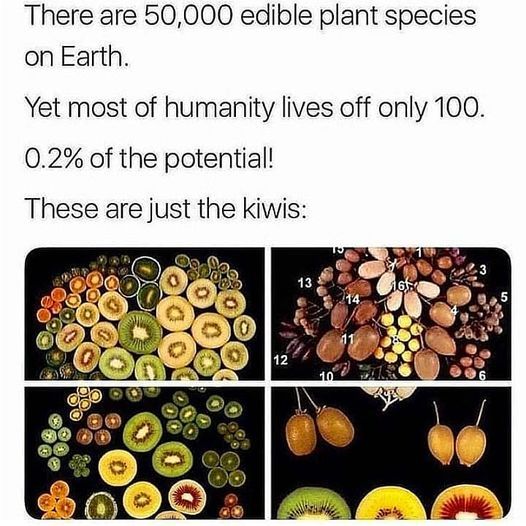#edible plants
Text

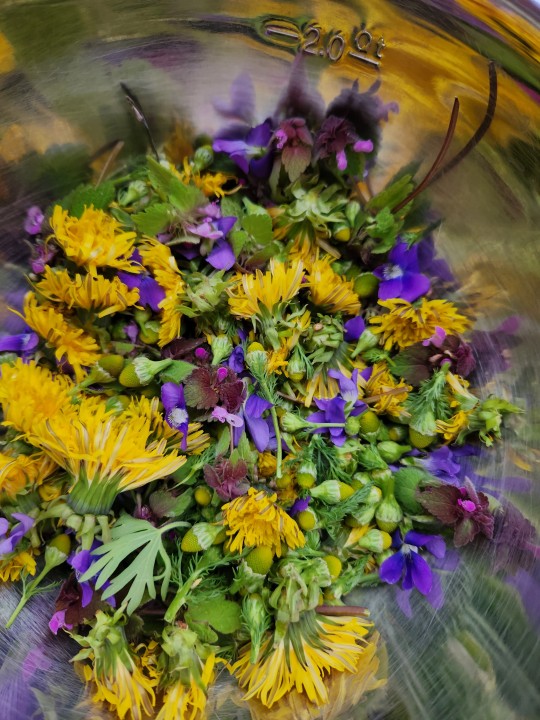

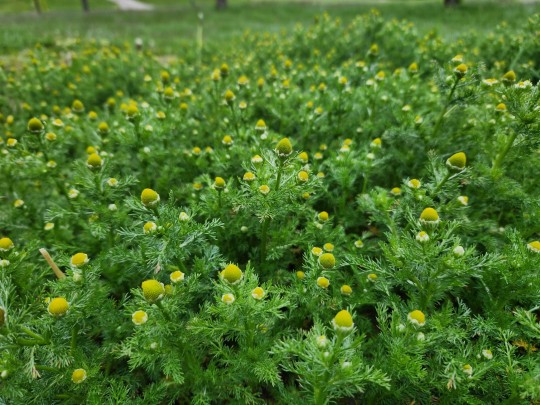
Lots of foraging today.
(flowers: mayweed, dandelion, dead nettle, violet, ground clover, henbit, cranesbill
leaves: chicory, dandelion, plantain, ground clover)
#nature#forage#foraging#eat the weeds#naturecore#solarpunk#edible plants#nature photography#cottagecore#plants#medicinal plants
20 notes
·
View notes
Photo
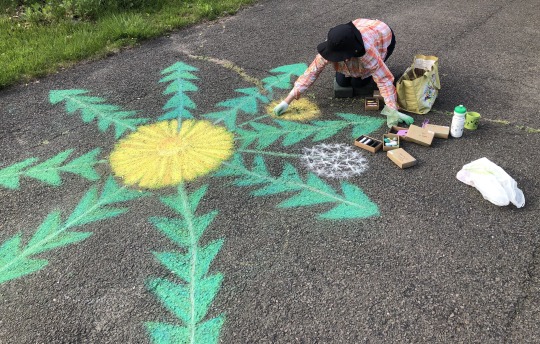
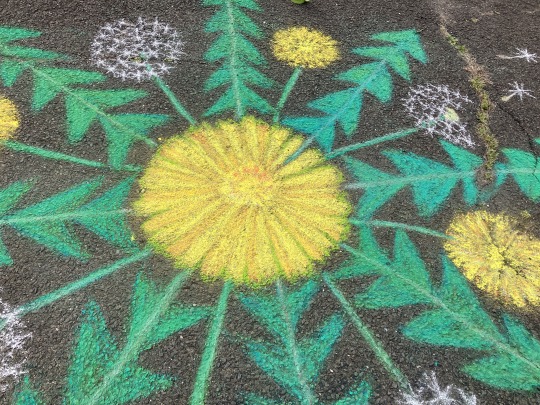
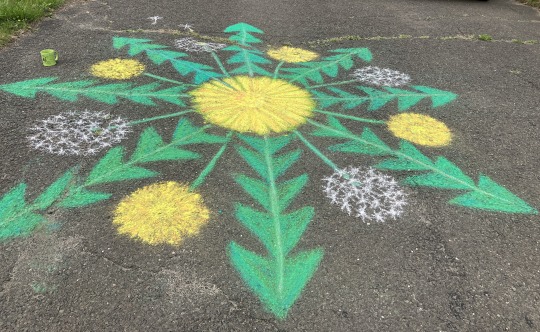
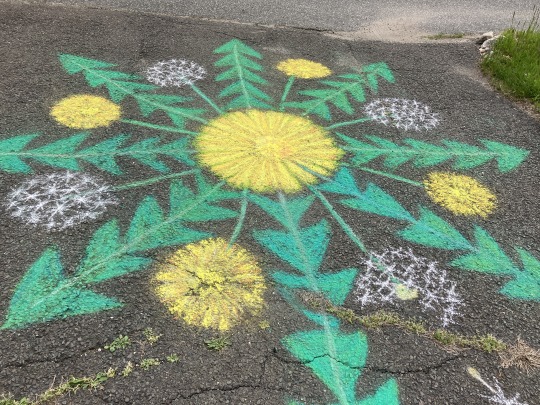
Dandelion mandala.
#dandelions#mandalas#powerful plants#beauty#springtime#summertime#sun#moon#stars#edible plants#joyful#good cheer#chalk art#my art
14K notes
·
View notes
Text

ETA: I wrote up a guide on clues that a foraging book was written by AI here!
[Original Tweet source here.]
[RANT AHEAD]
Okay, yeah. This is a very, very, very bad idea. I understand that there is a certain flavor of techbro who has ABSOLUTELY zero problem with this because "AI is the future, bro", and we're supposed to be reading their articles on how to use AI for side hustles and all that.
I get that ID apps have played into people's tendency to want quick and easy answers to everything (I'm not totally opposed to apps, but please read about how an app does not a Master Naturalist make.) But nature identification is serious stuff, ESPECIALLY when you are trying to identify whether something is safe to eat, handle, etc. You have to be absolutely, completely, 100000% sure of your ID, and then you ALSO have to absolutely verify that it is safely handled and consumed by humans.
As a foraging instructor, I cannot emphasize this enough. My classes, which are intended for a general audience, are very heavy on identification skills for this very reason. I have had (a small subsection of) students complain that I wasn't just spending 2-3 hours listing off bunches of edible plants and fungi, and honestly? They can complain all they want. I am doing MY due diligence to make very sure that the people who take my classes are prepared to go out and start identifying species and then figure out their edibility or lack thereof.
Because it isn't enough to be able to say "Oh, that's a dandelion, and I think this might be an oyster mushroom." It's also not enough to say "Well, such-and-such app says this is Queen Anne's lace and not poison hemlock." You HAVE to have incredibly keen observational skills. You HAVE to be patient enough to take thorough observations and run them through multiple forms of verification (field guides, websites, apps, other foragers/naturalists) to make sure you have a rock-solid identification. And then you ALSO have to be willing to read through multiple sources (NOT just Wikipedia) to determine whether that species is safely consumed by humans, and if so if it needs to be prepared in a particular way or if there are inedible/toxic parts that need to be removed.
AND--this phenomenon of AI-generated crapola emphasizes the fact that in addition to all of the above, you HAVE to have critical thinking skills when it comes to assessing your sources. Just because something is printed on a page doesn't mean it's true. You need to look at the quality of the information being presented. You need to look at the author's sources. You need to compare what this person is saying to other books and resources out there, and make sure there's a consensus.
You also need to look at the author themselves and make absolutely sure they are a real person. Find their website. Find their bio. Find their social media. Find any other manners in which they interact with the world, ESPECIALLY outside of the internet. Contact them. Ask questions. Don't be a jerk about it, because we're just people, but do at least make sure that a book you're interested in buying is by a real person. I guarantee you those of us who are serious about teaching this stuff and who are internet-savvy are going to make it very easy to find who we are (within reason), what we're doing, and why.
Because the OP in that Tweet is absolutely right--people are going to get seriously ill or dead if they try using AI-generated field guides. We have such a wealth of information, both on paper/pixels and in the brains of active, experienced foragers, that we can easily learn from the mistakes of people in the past who got poisoned, and avoid their fate. But it does mean that you MUST have the will and ability to be impeccably thorough in your research--and when in doubt, throw it out.
My inbox is always open. I'm easier caught via email than here, but I will answer. You can always ask me stuff about foraging, about nature identification, etc. And if there's a foraging instructor/author/etc. with a website, chances are they're also going to be more than willing to answer questions. I am happy to direct you to online groups on Facebook and elsewhere where you have a whole slew of people to compare notes with. I want people's foraging to be SAFE and FUN. And AI-generated books aren't the way to make that happen.
#foraging#mushroom foraging#plant foraging#mushrooms#edible plants#edible mushrooms#wild foods#food#nature#AI#fungus#fungi#poisonous mushrooms#poisonous plants#botany#mycology#rant
4K notes
·
View notes
Text
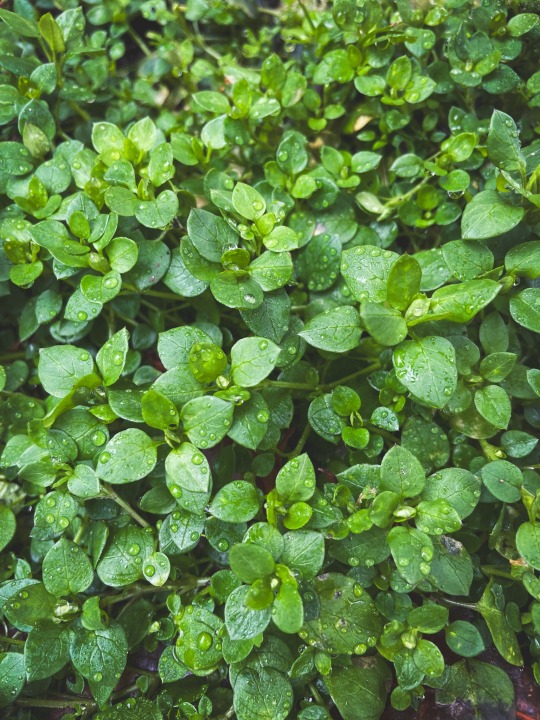
Stellaria media, or chickweed, is often considered a nuisance or just something to throw to the chickens when found outside of its native habitat (Eurasia).
WELL I’m here to tell you that you are missing out on this actually delicious plant. It’s one of my favorite spring greens to eat raw. I pile it on top of sandwiches and use it in salads. It tastes like oak leaf lettuce with a dash of sweetness similar to corn.
Think about this FREE salad ingredient next time you’re looking at a $3 bag of wilty spring mix
#stellaria media#chickweed#plantblr#eat the weeds#foraging#edible plants#you can find it in gardens and farmland most often#or any disturbed soil with some richness going on#i took this photo yesterday morning so she's OUT THERE#at least in the northeastern us#caryophyllaceae#food plants#los plantalones#farmland
226 notes
·
View notes
Text

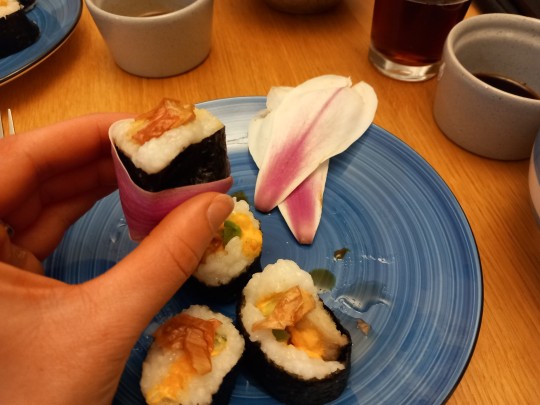
This is how I use pickled magnolia petals - as ginger on homemade sushi! I also love it enough to enjoy wrapping a fresh blossom around each piece to eat it too.
The miso soup features wild garlic, another wonderful spring time edible.
167 notes
·
View notes
Text
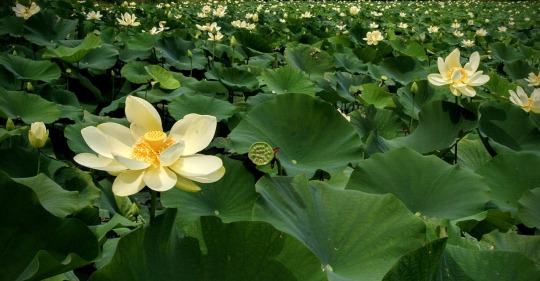
Did you know North America has a native lotus? Nelumbo lutea or yellow lotus is one of only two wild lotus species left on the planet. This prehistoric giant produces the largest flower in North America - the size of your head! The leaves average two feet across. It grows from the Great Lakes down to Central America and the Caribbean. It is edible, medicinal, mildly poisonous, and mildly psychoactive. Many Native American tribes believed it had mystical powers.
More info:
• Native American Ethnobotany Database
• Plants for a Future Database
• Wikipedia
Photo from Wikimedia Commons
#bane folk#lotus#yellow lotus#american lotus#nelumbo lutea#nelumbonaceae#sacred lotus#ancient plants#prehistoric plants#north america#ethnobotany#poisonous plants#medicinal plants#edible plants#psychoactive plants
210 notes
·
View notes
Video
youtube
Oakland's Radical Plant Nursery Breaks the Prison Cycle
Permaculture instructor Andrew Millison journeys to East Oakland, California, to visit the legendary plant nursery Planting Justice, which primarily hires formerly incarcerated people. They provide a fair wage and benefits to former prisoners with unbelievable results: a 2% recidivism rate, compared to 60% for the State of California. The nursery itself has an incredible diversity of edible and useful plant species and varieties, custom selected to grow an epic permaculture garden.
ORDER YOUR PLANTS: https://plantingjustice.org/
#permaculture#oakland#planting justice#perennial#food forest#fruit trees#fair wages#edible city#edible plants
272 notes
·
View notes
Text
Rabbitkin (or any prey animal) tips- FORAGING!
It’s easy to forget that we have nutritious food right in the yard, park, or the woods! For animals like rabbits or deer or anything that likes to forage we can safely forage If you know your plants well!
(REMEMBER- ALWAYS do your research! Look up different plants/mushrooms and MAKE SURE TO POSITIVELY IDENTIFY any plant before eating!)
Heres some yummy forage that’s super good for you:
🌸 Dandelions! The cute yellow flowers are delicious and all parts are edible! Best in early spring before they get bitter.
🍓🫐 wild berries! Blackberries are easy to identify in the wild by spikey bushes and familiar leaves. The fruits are amazing and the leaves are edible in moderation- makes a lovely tea! Wild strawberries are delicious but hard to find!
☘️ Wild sorrel- one of my favorites! A tangy, yellow-green clover looking plant- tastes like sour patch kids! Contains oxalis acid so eat in moderation!
🧄 Wild garlic- A tall, garlicky smelling stalk, great to put in recipes or eat right off the ground.
🧅 Wild onion- These are easy to identify by dark green stalks and oniony smell. Great right off the ground or in recipes!
Kudzu- Everything but the seeds are edible on a kudzu plant! This is a southern growing vine that has taken over the south- but it’s edible and very delicious!
Nasturtium- I plant these in my garden to repel pests- but the leaves and flowers are delicious and taste like peppers! They grow really fast and are so fun to eat!
#rabbitkin#rabbit#bunnykin#preykin#otherkin#therian#Rabbit therian#deerkin#cowkin#prey#grazing#edible plants
218 notes
·
View notes
Text
List of my all time favorite wild edibles:
Wood sorrel-- This stuff is la crème de la crème. It tastes like green apple and you can just munch on the whole plant as a snack (but don't eat too much bc it can make ur stomach hurt if u eat a ton)

Purslane-- This plant is very literally everywhere, as in growing out of sidewalk cracks, and has a great taste- like mild lemon. It is also really good for you and has a crunchy texture that I super love. Its pretty easy to identify, but you've got the wrong plant if its sap is milky white.

Acorns-- You've absolutely got to leach out the tannins in these, but once you have you can make pretty much anything. I would recommend acorn flour, but if you are adventurous you could make acorn jelly!
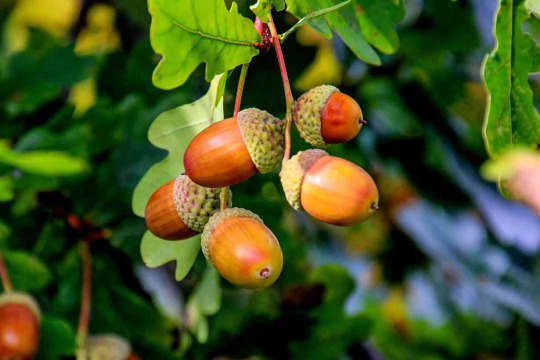
Ground Ivy-- This plant has a strong and pleasant taste, and is really good made into a tea. I wouldn't necessarily recommend it for a snack, but if that's what you like I wont stop you!
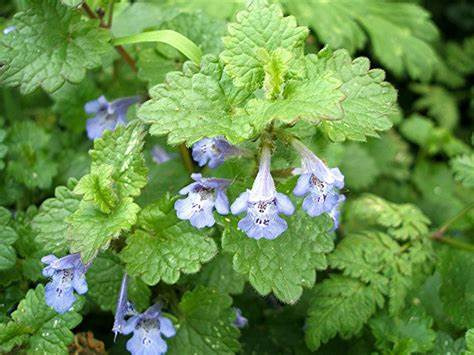
Cattail-- Obviously I cant make a list of my favorite wild edibles without including the one and only cattail. All of it is edible (though I wouldn't eat the forbidden hotdog--it's forbidden for a reason) and my favorite way to eat it is to take the immature flower head, which is the forbidden hotdog before it becomes brown, and roast it over a fire. It tastes a bit like corn.

River Grape-- This mostly applies to all species of wild grape, but River Grape is the kind growing in my area. The berries are a bit tart to eat a ton, but you could probably make a mean pastry with them. But the real gold lies in the leaves, which can be crisped like kale chips or turned into fabulous stuffed grape leaves. Sometimes I just eat them straight off the vine. They are just slightly tart.

Wintergreen-- It is always a treat when I find wintergreen growing on the forest floor, especially if its the time of year that it fruits. The taste is strong, like wintergreen gum, and the berries taste the same but milder.

Autumn Olive-- This plant is invasive in my area, so I don't have to feel bad about devastating the bush whenever I find one. The berries are sour, but in a good way, and sometimes they can be just a bit astringent but it depends on the bush. They don't taste at all like olives so I really don't know where they got the name but if you run into this plant you absolutely cannot pass up the opportunity to try it.

And those are my favorites, folks! As always remember to be 100% sure when you identify a plant, and don't harvest from places that might be polluted by pesticides or or other pollutants.
127 notes
·
View notes
Text
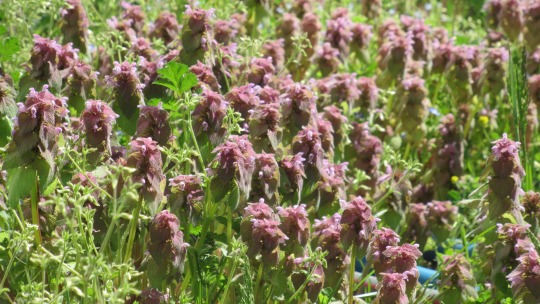
Purple Dead-Nettle looks like candy.
#nature#woods#forest#pagan#trees#witchy#woods witch#forest witch#cottagecore#cottage#naturecore#wild flowers#flowers#edible plants#foraging#nature photography
24 notes
·
View notes
Text
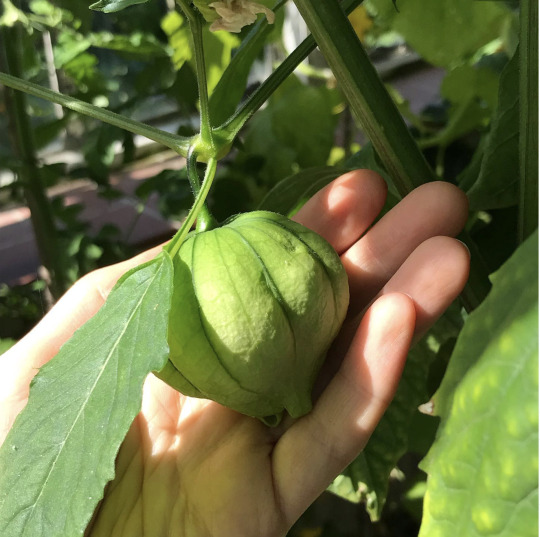
The tasty tomatillo (Physalis philadelphica) is where we get the English name “tomato”. The tomatillo is a domesticated version of wild plants found in Central America and is known in the Nahuatl language as “tomatl”. This plant is related to tomatoes because it is a member of the Solanaceae family, but it is not a tomato! This fruit grows in a husk that resembles a paper lantern and when it’s ripe the husk splits to reveal the plump green fruit. The tomatillo is the main ingredient of Mexican / Tex Mex salsa verde.
#katia plant scientist#botany#plant biology#plant science#plants#tomatillos#tomato#green#plant scientist#plant#plant aesthetic#plantblr#plantcore#greenhouse#edible plants#nahuatl#mexican food#aztecs#indigenous food#salsa verde#fruit#exotic fruit#gardening
62 notes
·
View notes
Text
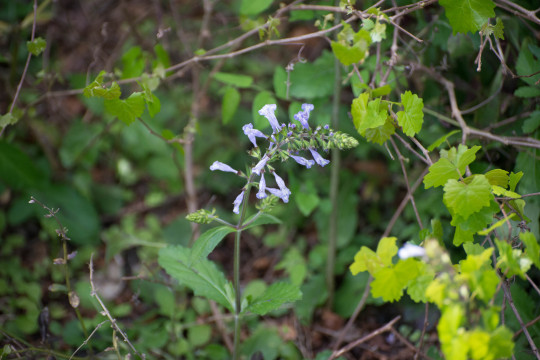



Four edible plants native to Florida.
Salvia Lyrata, or Lyreleaf sage, a plant historically used by natives for medical purposes, is used for teas mainly. I haven't tried it but the whole plant is edible.
Stachys Floridana, or Florida Betony is a beautiful wildflower that produces white tubers that look a bit like grubs but taste almost like radishes, crispy and fresh.
Sambucus Nigra, or Elderberry /Elderflower depending on what stage it's in, is used for a nice tea in the flowering stage and syrups and jellies are made from the berries. They're also nice to look at.
Smilax auriculata, or Earleaf Greenbrier is pictured here, but all species are edible and have the same basic look. These are considered a nuisance by a lot of gardeners but they're my favorite from this list. The soft new growth at the end of vines look like asparagus and taste just as good in my opinion, which is where one common name, wild asparagus, comes from. In the spring you can eat whole meals of this stuff right off the plant just walking down a hiking trail, all you have to do is snap it off right where it wants to and chow down
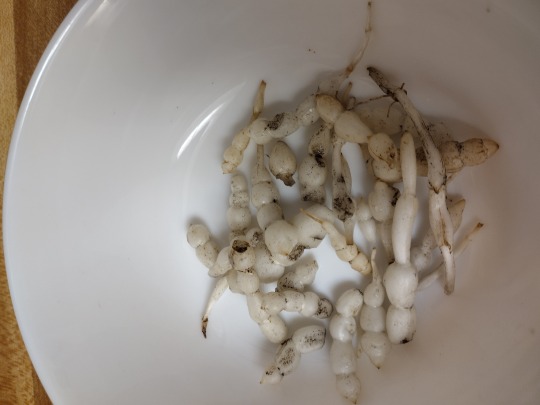

#nature#photography#original photographers#photographers on tumblr#florida#cottagecore#flowers#edible plants#education#native plants#wild food
18 notes
·
View notes
Text


Another invasive (but delicious edible) plant that plagues many a garden, especially on the western and eastern coasts of the US: cardamine hirsuta, or hairy bittercress.
This is a winter annual, and can be found absolutely Thriving long after other plants have died back from cold. This is the time they should be picked, whether for eating or for general removal. They come out of the ground easily, roots and all. If you plan on eating them, choose ones that haven’t gone to flower yet, as the leaves become bitter and tough.
Around mid-spring the plant goes to seed, and at that point you’re fucked – the seedpods will literally EXPLODE at the slightest touch. (I’ve walked through places where they were unavoidable, and it sounds like tiny popcorn!) That’s why they spread so prolifically.
Okay, but what does it taste like? Even though it’s called bittercress, it’s not bitter at all. It’s very similar to other plants in the brassica family… if you like mustard, cress, or arugula, you will like hairy bittercress! It’s slightly peppery, a little mustardy, and more mild than the name suggests. It’s best used raw in salads or sandwiches.
Now go munch on/population control some of those cressy bastards.
#cardamine hirsuta#hairy bittercress#foraging#edible plants#brassicas#US invasive plants#my photos#los plantalones
193 notes
·
View notes
Text
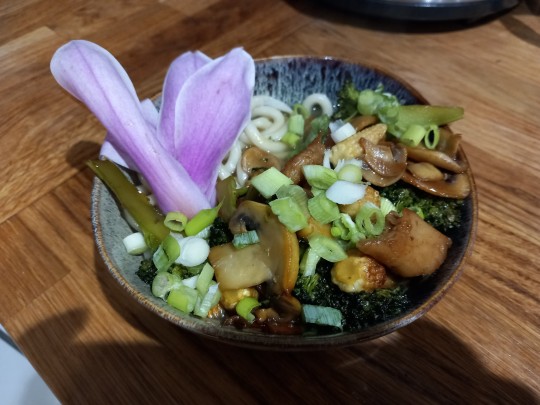
Final magnolia post!! This udon noodle soup had a broth made with wild garlic and the last of last year's dried porcinis, and some fresh magnolia blossoms to add a sweet gingery kick. It was delicious!
54 notes
·
View notes
Note
hey! from the Mediterranean and i found something that looked like a sweet potato in the parking lot and brought it home because. free sweet potato. but it is. not a sweet potato probably? and i was wondering if you do happen to know what it is.


thank you and have a great day either way.
Hi this is the funniest ask ive ever received fjdjdjdjdjd congrats on ur tuber adventure
possibly my favorite thing about this is that you have not at all specified if this is a parking lot in which one would reasonably expect to find edible foods like, say, a grocery store, or if it was instead. a garden store. Or hardware store. Or theater.
All following advice is going to be based on the assumption that this parking lot was a statistically likely place to find lost scrumptious treats: if this is not the case, I cannot in good conscience tell you to eat it.
I think it's either a pale sweet potato variety or a yam--detailed walk-through of my reasoning under the cut!
I hope that's...a little helpful? Good luck with your parking lot tuber!
It appears to have pock-marking that could be either eyes or root scars and a thin epidermis. The smoothness of the epidermis eliminates cassava and a few other tuberose root vegetables. The length and size also eliminate several options, including variety options within potatoes, sweet potatoes, and yams--the most likely candidate groups your tuber belongs to.
Luckily, looking closer* at the vascular bundling can help us here! True potatoes (Solanum tuberosum) are produced from modified stem tissue, while sweet potatoes (Ipomoea) and yams (Dioscorea) are modified root systems.
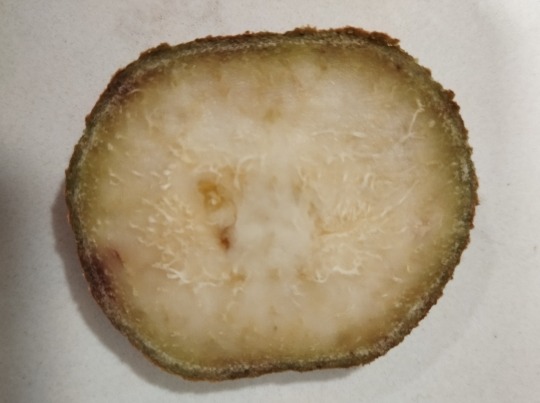
A stem system would have concentrated vascular bundling around the circumference, with an expanded starchy pith. Roots just sort of have their vascular systems wiggling around loose, and have more central bundling. It looks like that is what is happening here--so that's a no to the regular ol' potato.
So, either a yam or a sweet potato!
There are some pale sweet potato varieties--the "Hannah" sweet potato is my best guess, followed by the Japanese sweet potato. Failing that, some kind of yam (likely Dioscorea alata, D. cayanensis, or D. rotundata, but soooo many grains of salt).
*Thank you for sending me another picture of the cross section!
#thank you for sending this i had so much fun#love a little mystery#plant id#parking lot tuber#edible plants#raincoats speaks#botany
31 notes
·
View notes
